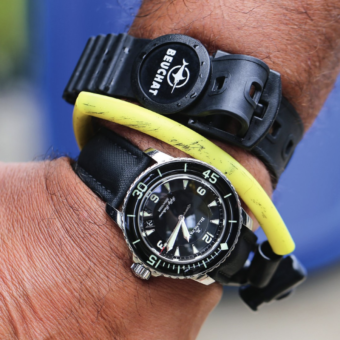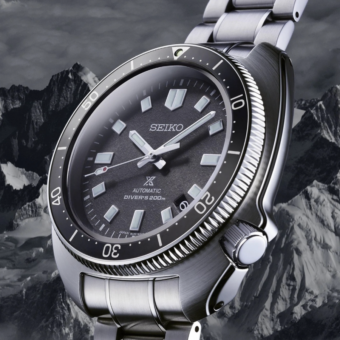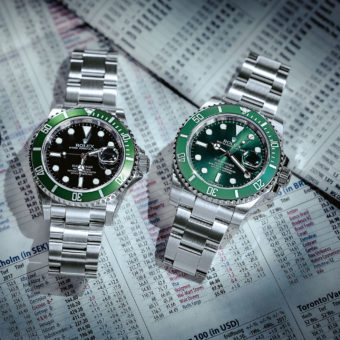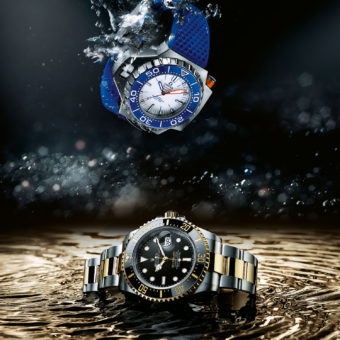This year, like many years before it, has brought many new watches to the world — from a fascinating new 36-mm Tudor, to a new look for the Rolex Daytona, to a revision of the IWC Pilot’s Watch series, to a new case shape in Cartier’s vast collections. And this year, like many years before it, watch manufacturers have continued to push watchmaking mechanics and designs forward in their efforts to cater to consumers’ preferences — and one element of this forward movement, somewhat ironically, is plainly a pronounced influence from the designs of the past.

This is the sentiment held by Alpina CEO Guido Benedini when I met with him recently to discuss the acquisition of his brand’s parent company, Frédérique Constant, by the Japanese brand Citizen (which you can read more about here). He expressed his own appreciation for vintage watches — and how as a whole each year more and more people seem to be interested in buying a watch with a history. It’s for this reason that he has in the past year developed a number of different historically inspired watches, including the piece we will be focusing on today: the Alpina Seastrong Diver Heritage.

This unorthodox-looking watch, released early in 2016, is based heavily on a piece released by Alpina 50 years earlier, the Alpina “10.” This historical watch was developed in partnership with Ervin Piquerez SA (EPSA), the first brand to patent this watch’s “Super Compressor” case design. This new design, partly developed in response to Blancpain’s patent at the time on the unidirectional bezel, promised to better secure the watch from water damage with correspondingly deeper diving depths and higher water pressure to better clamp the two sides of the case together. Along with Alpina, many other brands — such as Wittnauer, Hamilton, Enicar, Bulova, and plenty of others — also produced this style of watch alongside EPSA.
Eventually, as Blancpain’s patent ran out and watch technology improved, the “Super Compressor” style went out of fashion in favor of the more popular outside-the-case unidirectional bezel. But, as today’s appreciation for vintage styles have only continued to grow, Alpina has developed this watch to pay homage to its 50-year-old predecessor.
This modern timepiece has a 42-mm steel case water-resistant to about 300 meters and has two screw-down crowns — one with a traditional waffle pattern at the 2 o’clock position, and the other with the Alpina logo at the 4 o’clock mark. Powering the watch is the automatic Caliber AL-525, based on the Sellita Caliber SW 200, which has an approximately 38-hour power reserve — an attribute that suggest daily wear. On the dial is a black- or navy-colored outer rotating 60-minute counter, while for the inner section you have the option for either a silvered white or sunburst black dial. Indicating the time is a stick hour hand, an arrow-shaped minute hand, and an interesting pointer for the sweeping seconds hand that moves over the non-traditionally placed date indicator at a sub-3 o’clock position. If you are on the hunt for this piece, it is normally priced around $1,700.
This modern watch does share some obvious similarities to both the Alpina “10” and other vintage “Super Compressors,” with — of course — a few modern changes. The first thing to notice is the change in case size: historically, the options were either a 36-mm or 41-mm case. The 42-mm size of today’s watch is a bit larger and more in-line with the sizes Alpina has offered throughout its contemporary collections. Also, the choice of a leather strap instead of a metal bracelet or rubber strap, while in line with the vintage “10,” is different from most “Super Compressors,” especially as these are watches specifically designed for high water contact during diving. Other changes to note are in the more modern finishing overall and higher quality of materials on the modern watch as compared to the “10,” and the smaller, more refined crowns on the side of the modern watch.
As similarities go, there is much more common ground between the historical and modern watch than there are differences. This is seen in the dial colors, the choice of hands, the overall shape of the case, and of course the “Super Compressor” inner rotating 60-minute counter. Even some of the more subtle characteristics of the vintage model are evident on the contemporary model, such as the waffled crown, slightly non-squared date indicator, and the double-tick hour markers at both the 6 o’clock and 9 o’clock positions.
As a whole, I think this watch pays an honorable homage to the Alpina “10” and to the larger category of vintage “Super Compressors.” While I think a metal or rubber bracelet could have added an extra functionality to the piece, I do understand that this watch it is most likely intended more for so-called “desk divers” than for actual deep-sea dwellers. And, while I personally would have preferred a smaller 36-mm or 41-mm case size, I also understand Alpina is working to maintain consistency across its collection and also appealing to today’s consumer tastes. The Alpina Seastrong Diver Heritage is, most of all, a conversation piece with an unorthodox look. This is the style of watch that we vintage-watch lovers can most appreciate, and represents a trend I hope Alpina will continue to pursue in the future.
For our most recent article, in which I compare the modern Cartier Tortue to its vintage counterparts, click here.
Caleb Anderson is a freelance writer for various publications. Since first learning about horology, he has garnered extensive knowledge on vintage watches, and spends much of his time sharing his opinions within the field. Currently located near New York City, he is a persistent student in all things historical, a writer on many topics, and a casual runner.










